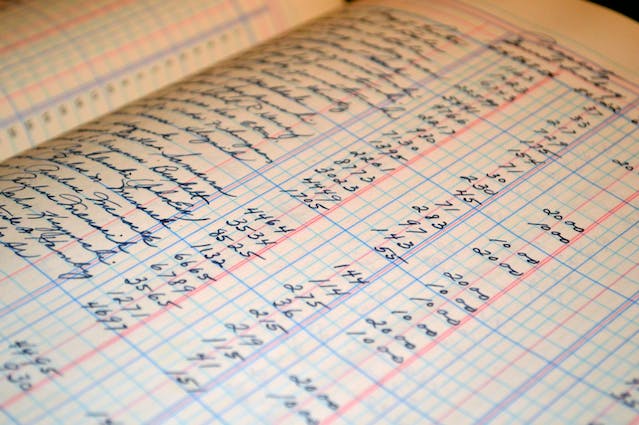The Accounting formula assets liabilities equity, also known as the basic accounting equation, is a fundamental principle in the field of accounting. This formula forms the basis of double-entry bookkeeping, the system used by most accountants to record and track financial transactions. The formula is expressed as.
Assets=Liabilities + Equity
Assets: These are resources owned by a business that are expected to bring economic benefits in the future. Assets include cash, inventory, property, equipment, and accounts receivable.
Liabilities: Liabilities are obligations of the business that arise from past transactions or events. They represent what the business owes to others, such as loans, accounts payable, mortgages, and other debts.
Equity: Also known as owner’s equity or shareholders’ equity, this represents the residual interest in the assets of the business after deducting liabilities. Equity can come from sources like investments made by the owners, retained earnings, or stock issued by the company.
The accounting formula ensures that a company’s balance sheet remains balanced, meaning the total value of the company’s assets is always equal to the sum of its liabilities and equity. This balance is crucial for accurately representing a company’s financial position.
- Double-Entry Bookkeeping: In this system, every financial transaction affects at least two accounts (one asset and one liability or equity account), keeping the accounting equation in balance. For instance, if a business takes a loan (increasing liabilities), it usually receives cash (increasing assets).
- Importance in Financial Analysis: The accounting formula is vital for financial analysis and decision-making. It helps in assessing the financial health of a business, understanding its capital structure, and making informed decisions about investments, credit, and risk management.
- Application in Business Scenarios: The formula applies to various business scenarios. For instance, when a company earns revenue, it increases its assets (like cash or accounts receivable) and simultaneously increases its equity (through increased retained earnings). Similarly, incurring expenses decreases assets (if paid in cash) or increases liabilities (if incurred on credit) and reduces equity.
The accounting formula is a cornerstone of financial accounting, offering a simple yet powerful tool for understanding and maintaining the financial balance of a business. It is essential for accountants, financial analysts, and business owners alike to grasp this concept for effective financial management and reporting.
Examples of accounting formula assets liabilities equity
Here are two examples to illustrate how the accounting formula (Assets = Liabilities + Equity) works in real-world scenarios:
Example 1: Starting a Business
Scenario: Sarah starts a bakery. She invests $50,000 of her own money (Equity) and takes a bank loan of $30,000 (Liability).
Accounting Formula Application:
- Assets: Cash = $80,000 (her investment + bank loan).
- Liabilities: Bank Loan = $30,000.
- Equity: Owner’s Equity = $50,000 (Sarah’s investment).
- Calculation: Assets ($80,000) = Liabilities ($30,000) + Equity ($50,000).
In this scenario, Sarah’s initial investment and the loan are recorded as assets (cash in the business). The loan is also a liability, while her investment is her stake in the business (equity).
Example 2: Buying Equipment and Earning Revenue
Scenario: A company buys equipment worth $20,000 by paying $10,000 in cash and taking a loan for the remaining $10,000. Later, the company earns revenue of $5,000, which is received in cash.
Accounting Formula Application Before Earning Revenue:
- Assets: Equipment ($20,000) + Existing Cash (before equipment purchase).
- Liabilities: Loan for Equipment ($10,000) + Other existing liabilities.
- Equity: Original equity + Earnings – Expense.
After Earning Revenue:
- Assets Increase: Cash increases by $5,000 (new revenue).
- Equity Increase: Equity increases by $5,000 (revenue).
- Calculation:
- Before Revenue: Assets (Equipment + Cash) = Liabilities (Loan) + Equity.
- After Revenue: Assets (Equipment + More Cash) = Liabilities (Same Loan) + Increased Equity (due to revenue).
In this example, purchasing equipment affects the assets (increasing by $20,000) and the liabilities (increasing by the $10,000 loan). The cash payment decreases the cash asset while not affecting liabilities or equity. Earning revenue increases both cash assets and equity.
These examples demonstrate how different transactions affect the balance sheet and how the accounting formula ensures that the financial position of the business is always accurately represented.

Conclusion
Assets = Liabilities + Equity
Assets=Liabilities+Equity is a fundamental principle that underpins the entire field of accounting. This equation is the cornerstone of the double-entry bookkeeping system and plays a critical role in ensuring that financial statements are balanced and accurately reflect a company’s financial position.
- Universality and Consistency: The accounting formula provides a universal and consistent framework for recording and analyzing financial transactions. It applies to businesses of all sizes and types, from small startups to large multinational corporations.
- Financial Health Indicator: By offering a clear view of a company’s assets, liabilities, and equity, this formula is instrumental in assessing financial health. It helps stakeholders understand how well a company is managing its resources, its debt levels, and its overall financial stability.
- Decision-making Tool: For business owners, investors, and financial analysts, this formula is crucial for making informed decisions. It aids in evaluating investment opportunities, determining creditworthiness, and developing strategies for growth and risk management.
- Compliance and Transparency: In the realm of financial reporting and compliance, the accounting formula ensures transparency and accuracy. It forms the basis for financial statements like the balance sheet, which are essential for regulatory reporting and for providing stakeholders with trustworthy financial information.
- Adaptability to Business Transactions: As seen in various examples, whether a business is acquiring assets, incurring liabilities, or altering its equity through investments or profits, the accounting formula adeptly adapts to reflect these changes, maintaining a balance that is vital for accurate financial reporting.
Overall, the basic accounting equation is not just a mathematical formula; it is a reflection of a company’s financial balance and health. Its simplicity belies its importance in the complex world of business finance, serving as an indispensable tool for maintaining financial integrity and fostering sound economic decision-making.
Frequently Asked Questions (FAQs) about accounting formula assets liabilities equity
Frequently Asked Questions (FAQs) About the Accounting Formula: Assets, Liabilities, and Equity
- What is the basic accounting formula?
The basic accounting formula is
Assets = Liabilities + Equity
Assets=Liabilities + Equity. It is the foundational equation in accounting, representing the relationship between a company’s assets, liabilities, and equity.
- Why is the accounting formula important?
This formula is crucial for ensuring that a company’s financial statements are balanced. It provides a clear and concise representation of a company’s financial health, indicating how assets are financed, whether through debt (liabilities) or through owner’s equity.
- Can the accounting formula ever be unbalanced?
In theory, the accounting formula should always be balanced. If it’s unbalanced, it often indicates recording errors, miscalculations, or mismanagement of accounts.
- How does the accounting formula relate to a balance sheet?
A balance sheet is a financial statement that directly applies this formula. It lists the company’s assets, liabilities, and equity at a specific point in time, showcasing the application of the formula.
- How do business transactions affect the accounting formula?
Every business transaction affects the formula. For example, purchasing an asset with cash decreases one asset (cash) while increasing another (property or equipment). Taking a loan increases both an asset (cash) and a liability (loan payable).
- Is the accounting formula different for small businesses and large corporations?
The formula is the same regardless of the size of the business. It applies universally to all business entities.
- Can equity be negative, and what does it mean?
Yes, equity can be negative if a company’s liabilities exceed its assets. This typically indicates financial distress and can be a red flag for investors and creditors.
- How does owner’s withdrawal affect the accounting equation?
Owner’s withdrawals decrease equity since they reduce the owner’s investment in the company. If the withdrawal is made in cash, it also reduces the assets.
- What role does depreciation play in the accounting formula?
Depreciation affects the formula by reducing the value of an asset (thereby reducing assets) and reducing equity through an expense that reduces net income.
- How does issuing stock affect the accounting equation?
Issuing stock increases assets (cash or other assets received from shareholders) and increases equity (as it represents additional owner’s equity in the company).
These FAQs encapsulate the most common inquiries regarding the basic accounting formula, offering insights into its significance and application in various financial contexts.









Leave a Reply